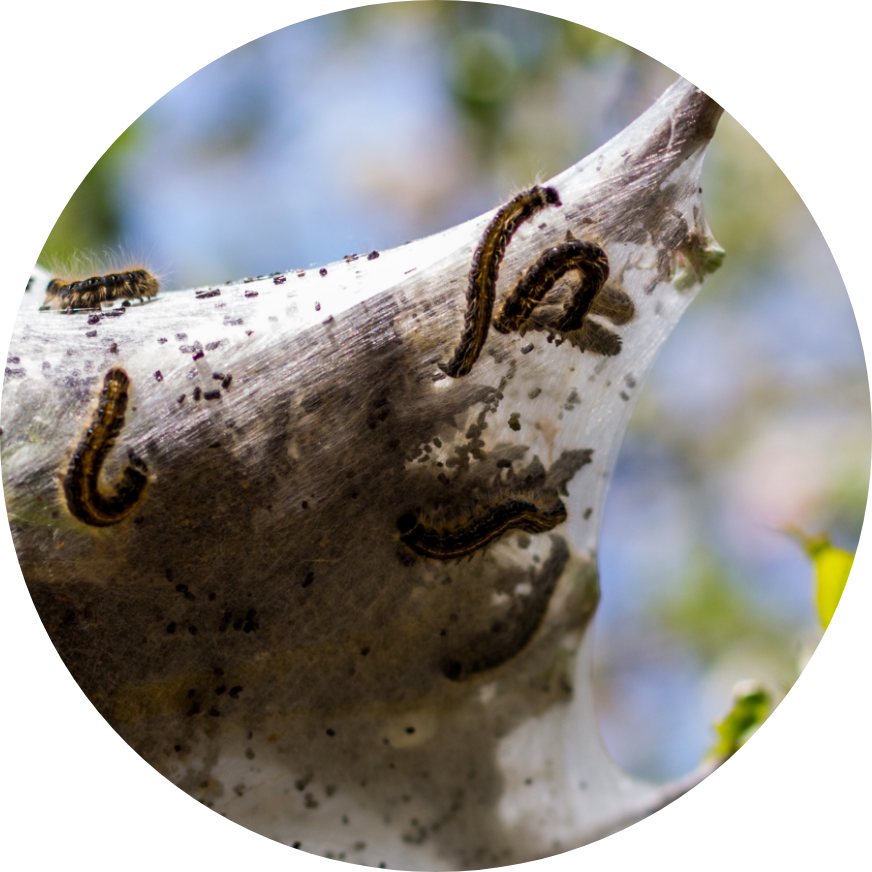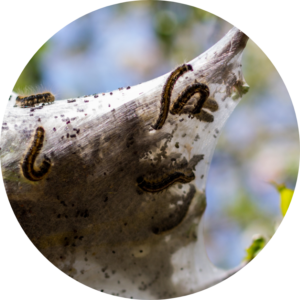Tent Worm

Tent worms (or tent caterpillars) are known to feed mostly on deciduous trees, including apple, ash, cherry, and willow, to name a few. They lay masses of eggs (amounts can vary from 150 to 400 eggs), allowing them to make it through the winter. This species tends to make nests of webbing in the forks of a tree’s branches and is most problematic in the early spring.
Colonies of tent worms can lead to defoliation of trees, resulting in slowed growth and crown dieback. In very rare cases, their presence may even kill an infested tree. However, they are more likely to be considered a pest for reasons related to aesthetics than anything else. The webbing they produce in the caterpillar stage of development is considered by many to be unsightly.
Preventative treatment is the best way to deal with a tent worm problem before it truly becomes one. In the winter, egg masses can be removed and disposed of before they have a chance to hatch in the spring; in the early part of that season, developing tents can be removed by hand. Pruning areas of larger infestation works, as does removing tents by wrapping them around the end of a stick. As with many of the insect pests, using aggressive chemical insecticides is not necessarily the best course of action, as it can kill the tent worm’s naturally occurring predators, such as parasitic wasps. The use of Bacillus thuringiensis has also been known to kill tent worms.

